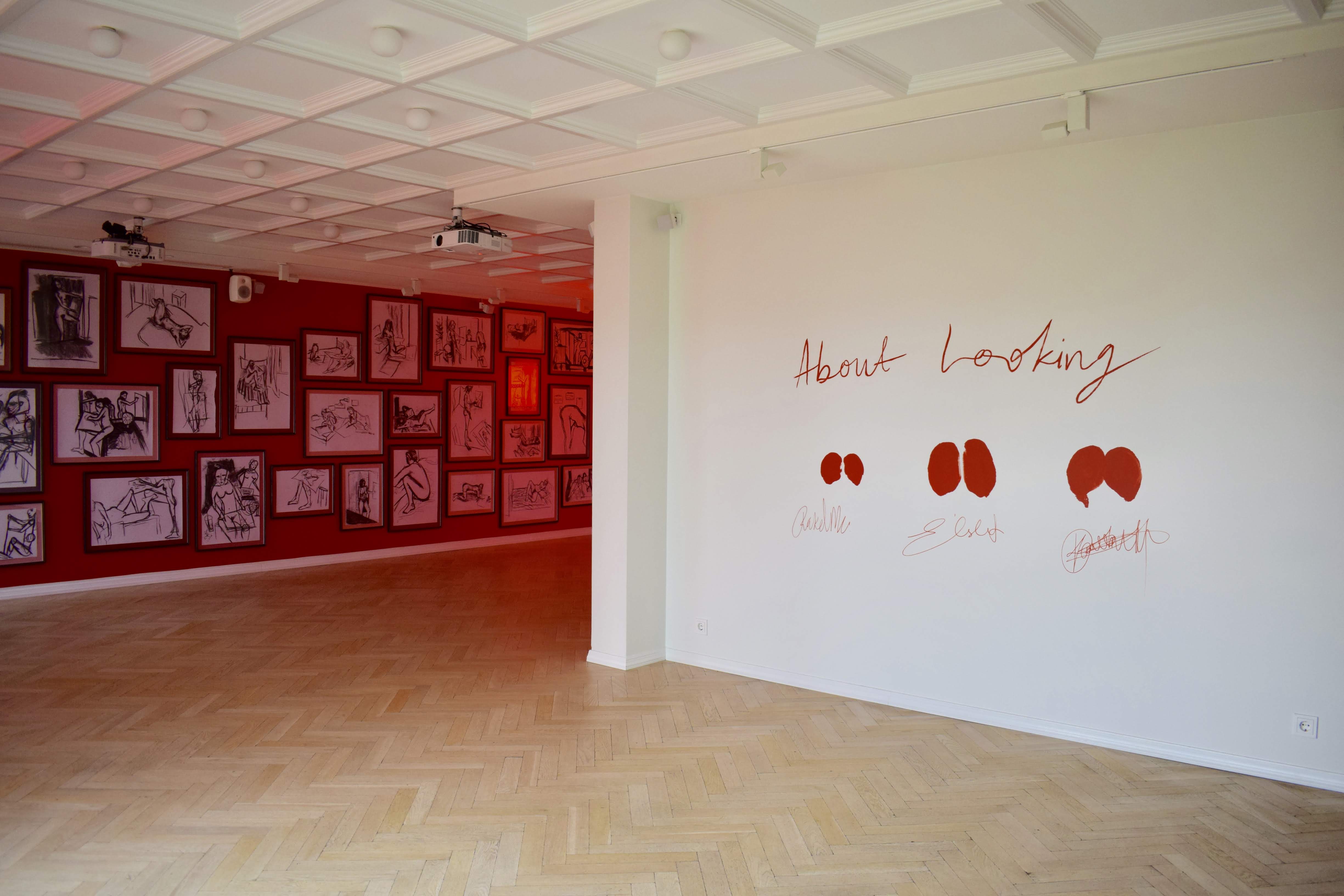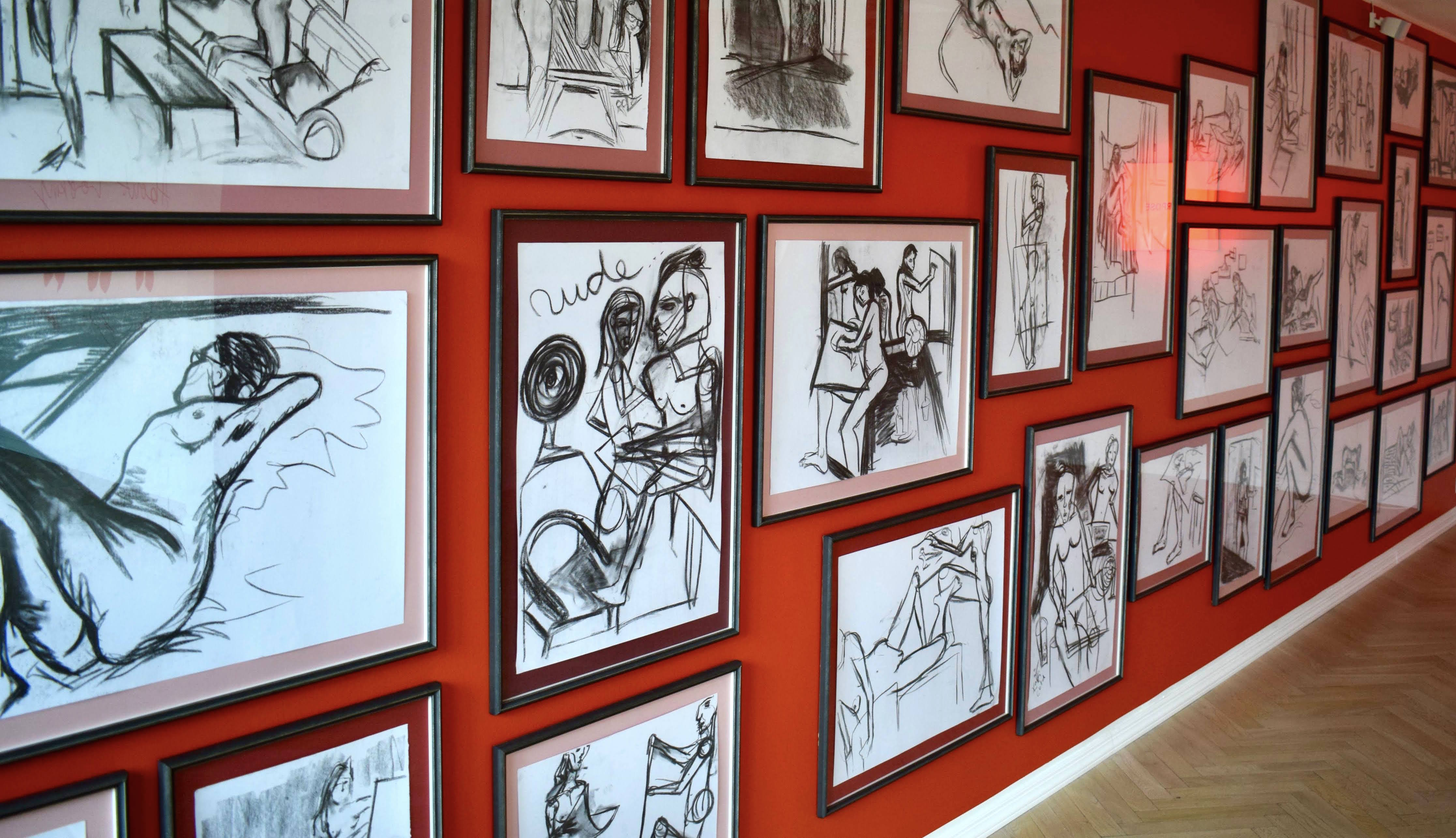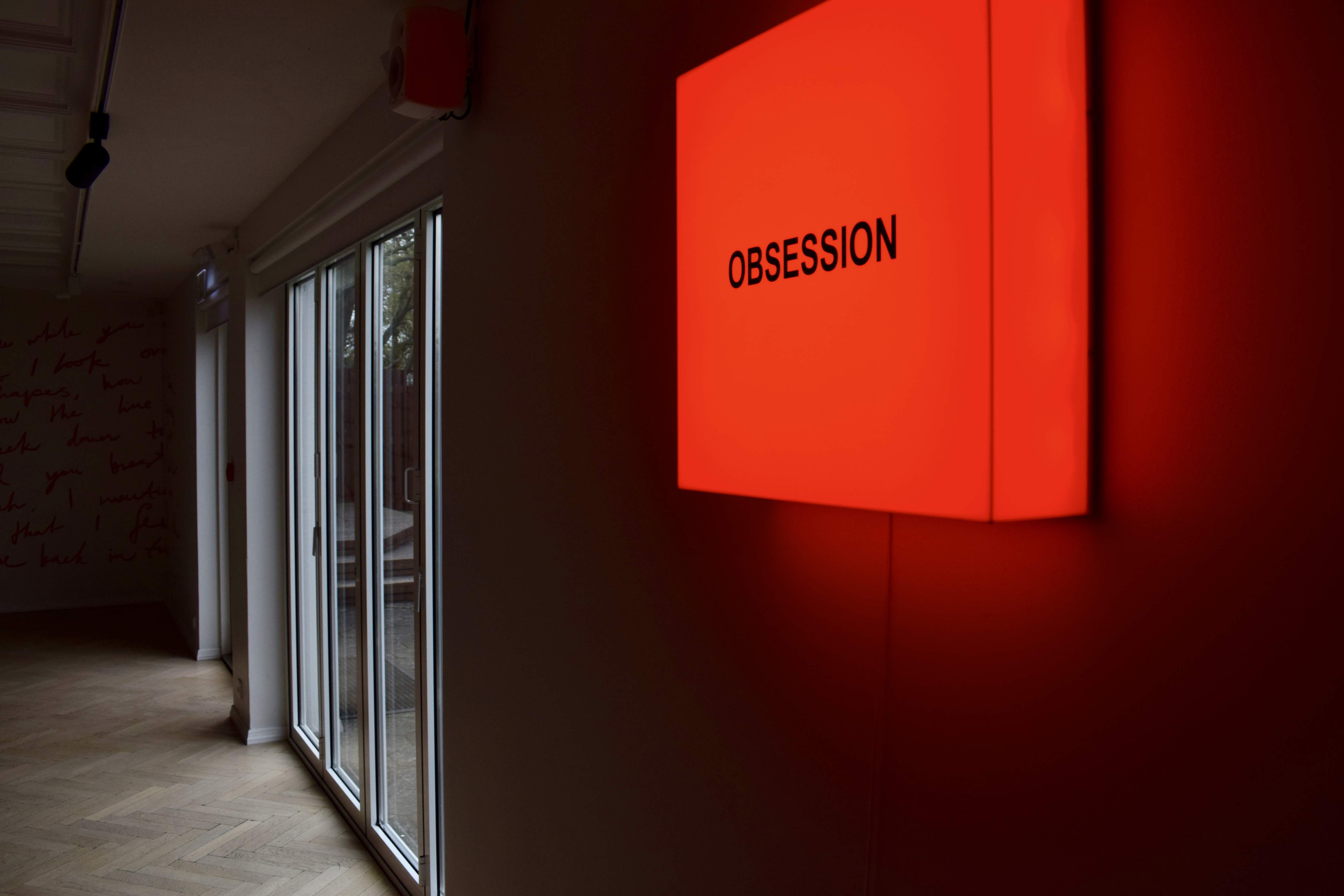About looking
It´s the media not you!
2018

In the swelter of a summer heat wave in Athens, in an apartmen without air conditioning, they took off their clothes and started to draw each other. Naked women drawing other naked women – nudes drawing the nudes – and thinking about nudity and drawing, looking and seeing The three women are Eva Ísleifs, Katrín Inga Jónsdóttir Hjördísardóttir and Rakel McMahon. They had collaborated and exhibited togethe before and had met in Athens for discussions and work but it was too hot inside or out the city, so they brought out their sketch pads instead – perhaps like a painter who paints a self portrait when she doesn't hav another model in hand this became a kind of a performance and it happened not just because o the heat but rather as a columination of their thinking and discussion about art.



Art reflects how we see the world but also tells us how we should look at it. The naked female body has long been a favourite subjec in art – more so than naked men – and this raises question about how w see women: Does nudity define femininity but not masculinity? The nude woman in a painting is most often passive. She poses motionles while the painting draws up her likeness to eventually show it to other who will then see in the painting a passive and apparently powerles woman. The performance in Athens reverses this situation to a degree There we have a naked woman drawing naked women who are als drawing her and each other. The artist is like a mirror image of th models, they stare intently at each other and all of them are drawing furiously. This is an attempt to radically re-interpret the tradition and th position of women as a subject in Western art.


Yet it is not only a critique because Eva, Rakel and Katrin Inga have entered into a conversation with the tradition in a city that we are used to considering as the cradle of Western art, literature and philosophy. They have worked in different artistic media – Eva has mostly sculpture, Rakel most often drawings, Katrin Inga has produced videos and performances – but in their collaborations the have focused on performance which they see as a research tool, a way to examine and analyse their artistic practice. They all graduated from the Iceland Academy of the Arts in 2008 and have since pursued further education, have all exhibited widely and explored various aspects of art and art theory.
The title of their exhibition, About Looking, is borrowed from a book by the novelist and art critic John Berger. Among his many admonitions he insisted that we should always revisit the tradition, rethink and rework it. Nothing in our culture – leas of all in art – is ever fully understood and finished with for good. “The relation between what we see and what we know is never settled”, wrote John Berger in his book Ways of Seeing. Model drawing was the foundation of art education in former times and long into the twentieth century but its importance has wande to the point where many art academies have abandoned it altogether, focusing instead on new media and conceptual work. We can therefore speak of a return when Katrin Inga, Eva and Rakel began to draw each other in Athens. A return, perhaps, to the nineteenth century when art students spent whole years of tge studies standing with a live model in-front of them, trying to capture the person on the paper tracing the lines of the body or face and exploring different poses and perspectives. To draw from real life was considered the foundation of all art an if proof was needed you could point to the old masters – to Leonardo ́s endless drawings of cats and horses, faces and other body parts.


Today we are content just to take a photograph on our cell phone. What purpose did all this drawing from life serve? Is reality not complete in itself Why make endless pictures of it? Perhaps the gal was not so much to capture reality but first and foremost to teach the students to look, to se reality without looking away or rushing on to the next thing. In order to draw something one has to see it properly, to examine it and try t understand. Drawing is first and a tool for gaining understanding an knowledge and, as John Berger pointed out, that is never ending project. Artists ́ attempts to understand the world around us is possibly the core of their work and what they can communicate to the rest of us. Good art makes us pause and look at things differently. It stops us in the middle o out busy day and says “Hey! Look at this!” The performance in Athens tha led to this exhibition is an attempt to capture this moment. They draw each other and see themselves mirrored in the drawings of the others.

The exhibition is designed to underline this. In addition to the drawing there is a text on the wall that describes the performance subjectively. There are three lit boxes on the walls with words “EGO”, “OBSESSION” and “PURPOSE” wich we can easily see as keywords to explain the compulsive drawing.



Finally, there is one photograph in the exhibition of a work that, for technical reasons, could not be completed, where Eva, Rakel and Katri Inga imprinted their naked bodies on a large column of clay. This work would have been quite different from the others in the exhibition and yet it would also have been a kind of document or “drawing” of their bodies. The understanding gained from model drawing can easily transfer to other media and even to life itself.
Written by Jon Proppé
2018
Exhibition in Gallery Gamma. Reykjavik. Iceland
Curated by Jon Proppé & Ari Alexander Ergis Magnússon
* * *
About It´s the media not you!
Founded 2015
Rakel McMahon, Eva Ísleifs and Katrín Inga Jónsdóttir Hjördísardóttir have been active participants of the Icelandic art scene for the last decade, as well as the art scenes of Athens, Edinburgh and New York where they have lived and studied. Their recent collaborative work draws on their collective roots in performative practice and their current research into the traditions of model drawing, drawing mediums and etching techniques. It is informed by their abiding interest in radical feminist, political and sex positive work, as well as their ongoing immersion into ways of seeing from a feminist perspective.
Individually profoundly different, their collaborative practice nonetheless achieves a fine balance between the conceptual, politically-and-stand-up inspired actions, sculptures and performances of Eva Ísleifs, the finely tuned, sarky, sometimes sublime and always intrinsically feminist performances and drawings of Rakel McMahon, and the unapologetic, spontaneous and exigent video and live performances of Katrín Inga Hjörleifsdóttir Jónsdóttir which hover between radical feminist performance and sex positivity.
Extract from a text written by Hanna Styrmisdóttir.